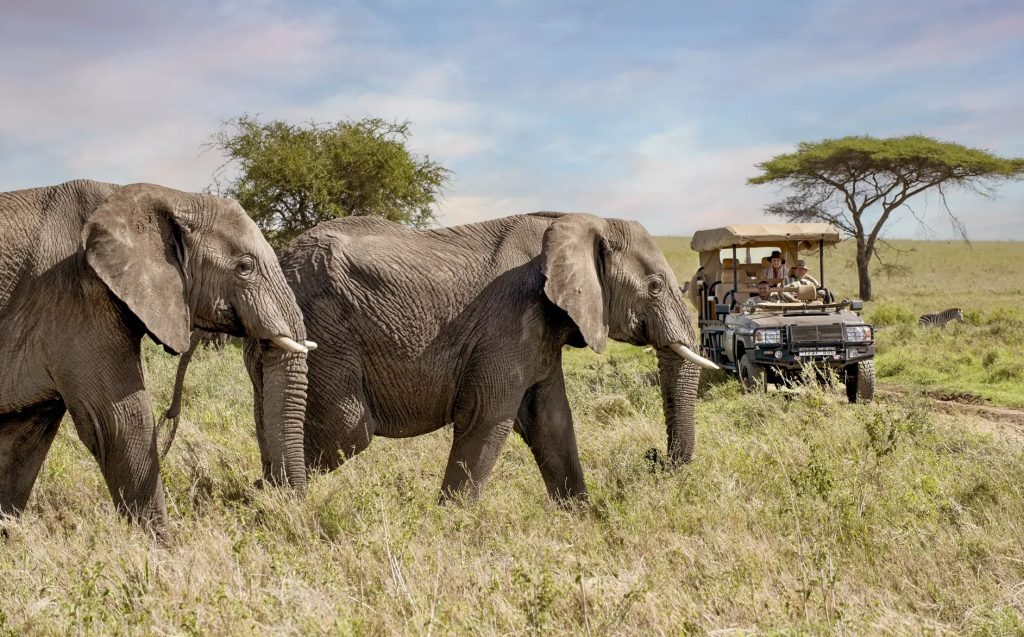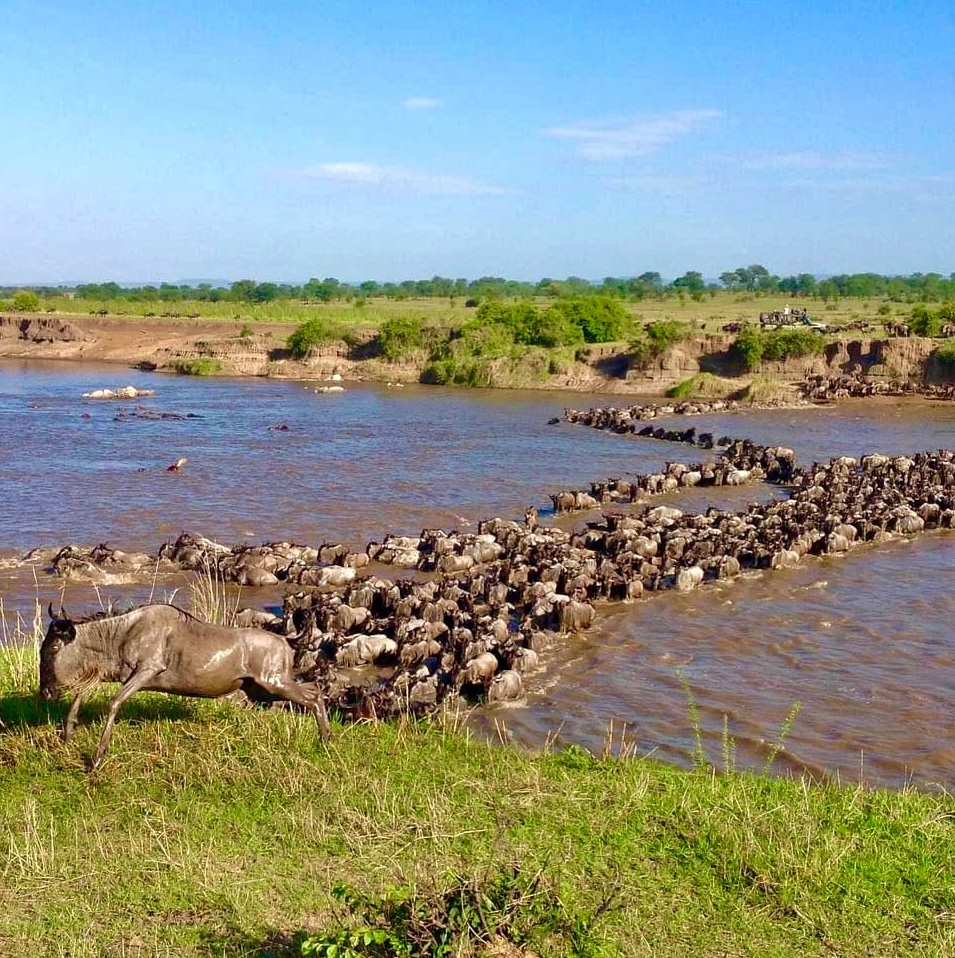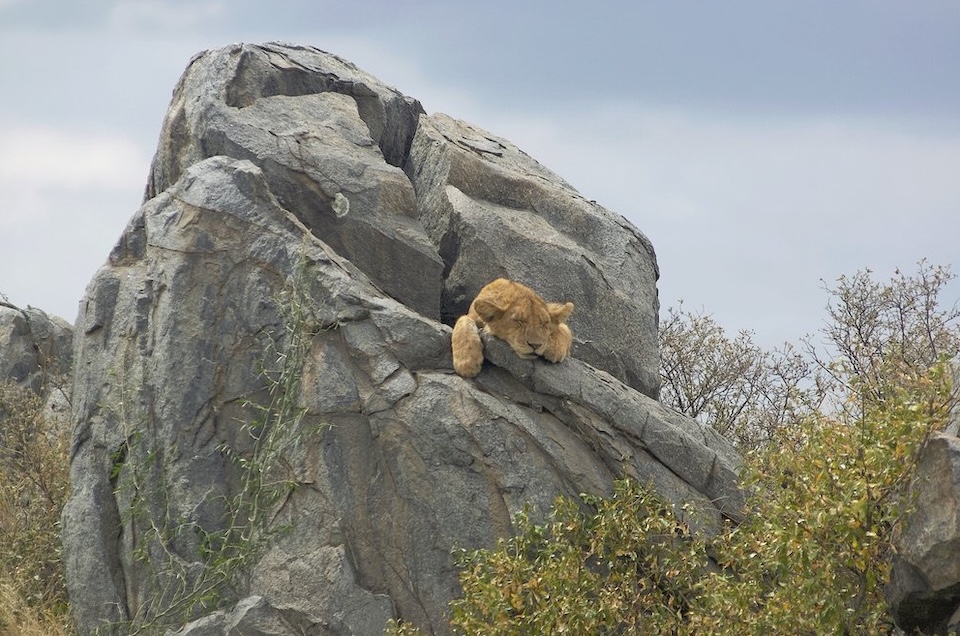Central Serengeti; The Seronera Valley
The Seronera Valley in Central Serengeti is the park’s beating heart, often called the “big cat capital” of the Serengeti due to its high density of lions, leopards, and cheetahs. The valley’s network of rivers, including the Seronera River, supports lush vegetation that attracts herbivores like impalas, giraffes, and elephants, which in turn draw predators. This makes it one of the best areas for year-round game viewing, even outside the migration season.
The Seronera Valley is also a hub for visitors, with several lodges, camps, and airstrips providing easy access. Its open plains and acacia woodlands offer a classic Serengeti experience, with opportunities to see dramatic hunts, especially at dawn or dusk. Hot-air balloon safaris over the valley provide breathtaking views of the landscape, often revealing herds of buffalo or a pride of lions below. For first-time visitors, the Seronera Valley is an ideal starting point to explore the Serengeti’s wonders.
Northern Serengeti
The Northern Serengeti, bordering Kenya’s Masai Mara, is a rugged and remote region where the Great Migration reaches its climax from July to November. Here, the herds cross the Mara River in a life-or-death struggle, facing crocodiles, currents, and predators on both banks. The area’s rolling hills, dense woodlands, and riverine forests create a stark contrast to the open plains of the south, offering a more intimate safari experience with fewer crowds.
Wildlife in the north includes large elephant herds, giraffes, and the elusive black rhino, while the river attracts hippos and crocodiles. The Northern Serengeti is also a birdwatcher’s haven, with species like the African fish eagle and kingfishers thriving along the Mara River. Camps like Sayari and Lamai Wedge offer exclusive access to this region, with guided walks and night drives providing a deeper connection to the wilderness.
Southern Serengeti
The Southern Serengeti, including areas like Ndutu and the Naabi Hill Gate, is the stage for the Great Migration’s calving season from December to March. During this time, over 1.5 million wildebeests gather on the short-grass plains to give birth to around 500,000 calves in a synchronized three-week period.
The abundance of newborns attracts predators like lions, hyenas, and jackals, creating a predator-prey spectacle that’s both thrilling and humbling.
The southern plains are vast and open, with fewer trees, making it easy to spot wildlife from a distance. The area is also home to Lake Ndutu and Lake Masek, which draw flamingos and other waterbirds during the wet season. Lodges and mobile camps in the south, such as Ndutu Safari Lodge, provide front-row seats to the calving season, with the added bonus of fewer tourists compared to the central region, offering a more serene safari experience.
Serengeti’s Western Corridor
The Western Corridor, stretching along the Grumeti River, is a critical passage for the Great Migration from April to June, as the herds move northwest from the southern plains. The Grumeti River crossings are a highlight, with crocodiles ambushing wildebeests and zebras as they navigate the waters. The corridor’s mix of grasslands, woodlands, and swamps supports a rich diversity of wildlife, including hippos, colobus monkeys, and the rare patas monkey.
This region is less visited than the central Serengeti, offering a quieter safari experience with stunning scenery.
The Grumeti Game Reserve, adjacent to the corridor, provides exclusive activities like walking safaris and night drives, not permitted within the national park. Camps like Kirawira Serena Camp offer luxury amidst the wilderness, with views of the river and opportunities to see the migration up close.
Eastern Serengeti
The Eastern Serengeti, bordering the Ngorongoro Conservation Area, is a transitional zone of rolling hills, volcanic landscapes, and short-grass plains. This region, including areas like Namiri Plains, is known for its cheetah populations, as the open terrain is ideal for their high-speed hunts. The eastern plains also host resident herds of zebras, gazelles, and giraffes, with predators like lions and leopards often spotted near kopjes.
The Eastern Serengeti is quieter than other regions, offering a sense of solitude amidst the wilderness. It’s also a gateway to the Ngorongoro Crater, making it a strategic stop for safaris combining both destinations. Exclusive camps like Namiri Plains Camp provide a luxurious base, with off-road game drives and walking safaris that let you explore this less-traveled corner of the park.

 The Serengeti’s wildlife diversity is unparalleled, thanks to its varied habitats that include grasslands, woodlands, swamps, and riverine forests. The park is home to over 2,500 lions, thriving in prides across its plains, with the Seronera Valley a hotspot for sightings. Leopards lurk in acacia trees, their spotted coats blending with the foliage, while cheetahs use the open grasslands to showcase their speed, often hunting impalas or gazelles.
The Serengeti’s wildlife diversity is unparalleled, thanks to its varied habitats that include grasslands, woodlands, swamps, and riverine forests. The park is home to over 2,500 lions, thriving in prides across its plains, with the Seronera Valley a hotspot for sightings. Leopards lurk in acacia trees, their spotted coats blending with the foliage, while cheetahs use the open grasslands to showcase their speed, often hunting impalas or gazelles.
